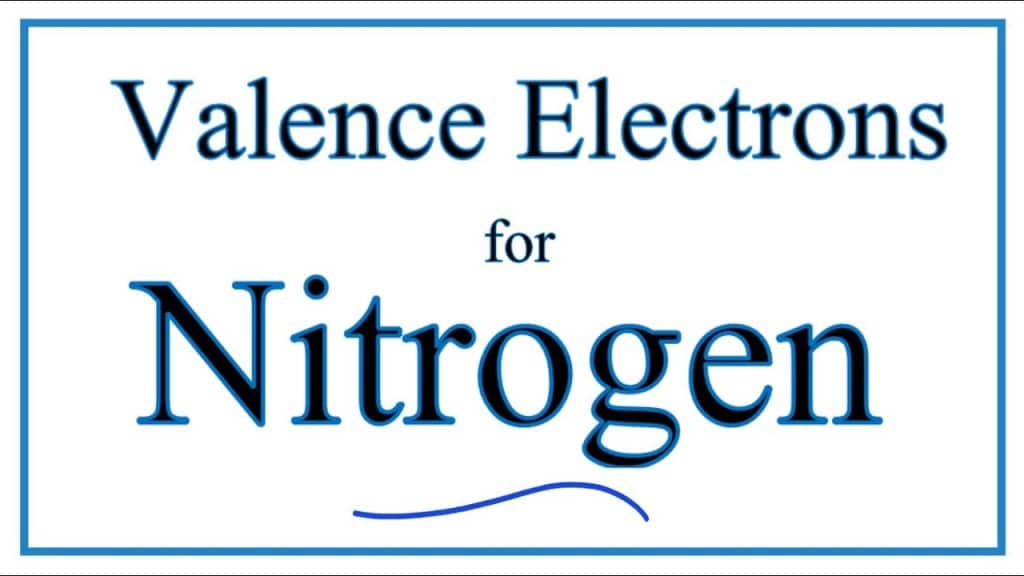Nitrogen, with its atomic number 7, is a crucial element in the periodic table. Its properties and reactivity are directly linked to its electronic configuration, and valence electrons play a vital role in this context.
To appreciate the significance of valence electrons in nitrogen, we’ll begin by discussing the basics of atomic structure, the periodic table, and the concept of valence electrons.
Then, we’ll explore the electronic configuration of nitrogen and its impact on its chemical behavior. Finally, we’ll delve into the real-world implications of nitrogen’s valence electrons, from its role in the atmosphere to its importance in various chemical compounds.
Table of contents
Atomic Structure and the Periodic Table
Before delving into the specifics of nitrogen’s valence electrons, it’s essential to understand the basics of atomic structure and the periodic table.
The periodic table is a systematic arrangement of all known elements, ordered by their atomic numbers. Each element is represented by its chemical symbol, such as “H” for hydrogen, “O” for oxygen, and “N” for nitrogen. Elements within the same column or group share similar chemical properties.
The atomic structure of an element consists of a nucleus, which contains protons and neutrons, surrounded by electrons orbiting the nucleus in energy levels or shells.
Electrons are organized into energy levels based on their energy and distance from the nucleus. The first energy level can hold up to 2 electrons, the second up to 8, the third up to 18, and so on.
The outermost energy level, known as the valence shell, is crucial in determining an element’s chemical properties.
Read ALSO: How Many Oz In A Pound: Understanding Weight Conversions
Valence Electrons: The Key to Chemical Behavior
Valence electrons are the electrons in the outermost energy level of an atom. These electrons are involved in chemical reactions and bonding with other atoms.
The number of valence electrons an element has directly affects its reactivity and its ability to form chemical bonds. Elements with the same number of valence electrons often exhibit similar chemical behavior.
In the periodic table, the group number indicates the number of valence electrons an element possesses. For example, elements in Group 1 have 1 valence electron, those in Group 2 have 2 valence electrons, and so on. Nitrogen, located in Group 15, has 5 valence electrons.
Read ALSO: How Many Sides Does a Pentagon Have? Geometric Basics
How Many Valence Electrons Does Nitrogen Have?
To understand how many valence electrons nitrogen has, we need to examine its electronic configuration.
The electronic configuration of an element describes how its electrons are distributed among the various energy levels and orbitals. Nitrogen, with an atomic number of 7, has the following electronic configuration:
1s² 2s² 2p³
This configuration signifies that nitrogen has a total of seven electrons distributed as follows:
- 2 electrons in the first energy level (1s²)
- 5 electrons in the second energy level (2s² 2p³)
The second energy level, which includes the 2s² and 2p³ sublevels, is the valence shell for nitrogen. Therefore, nitrogen has 5 valence electrons in its outermost energy level.
These 5 valence electrons in nitrogen’s outermost shell play a significant role in determining its chemical properties and reactivity. To understand this better, let’s explore how nitrogen behaves in various chemical contexts.
Nitrogen in the Atmosphere
One of the most well-known and vital roles of nitrogen is its presence in Earth’s atmosphere. The Earth’s atmosphere primarily comprises diatomic nitrogen molecules (N₂), where two nitrogen atoms share a triple bond. This diatomic nitrogen is remarkably stable and makes up approximately 78% of the atmosphere.
The stability of N₂ is due to the strong triple bond between the two nitrogen atoms, formed by the sharing of electrons from each nitrogen atom.
This triple bond results from the nitrogen atoms in N₂ sharing three pairs of electrons, making it one of the strongest chemical bonds known. The strength of this bond is essential for maintaining the atmosphere’s stability and preventing uncontrolled reactions in the air.
Read Also: How Many Ounces in a Quart Breaking Down Volume Measurements
Nitrogen’s Role in Biomolecules
Nitrogen is a fundamental element in the building blocks of life, as it is a key component of amino acids, the building blocks of proteins.
Amino acids contain amino and carboxyl groups, and the amino group typically consists of a nitrogen atom bonded to hydrogen atoms. The presence of nitrogen in amino acids is critical for protein structure and function.
Additionally, nitrogen is an essential component of nucleic acids, such as DNA and RNA, which store and transmit genetic information.
In DNA, nitrogenous bases, adenine, cytosine, guanine, and thymine, contain nitrogen atoms, forming hydrogen bonds with complementary bases to maintain the double-helix structure of the DNA molecule.
Nitrogen in Fertilizers
Nitrogen is a vital element in agriculture and is used extensively as fertilizer to enhance plant growth. Plants need nitrogen to synthesize amino acids, proteins, and chlorophyll, which are essential for their growth and development. Nitrogen fertilizers provide a readily available nitrogen source for plants, increasing crop yields and ensuring food security.
Nitrogen in the Chemical Industry
Nitrogen’s reactivity, due in part to its 5 valence electrons, is also utilized in various industrial processes. One notable example is the production of ammonia (NH₃), a key precursor for synthesizing fertilizers and various chemicals. The Haber-Bosch process, which combines nitrogen from the atmosphere with hydrogen, is a crucial industrial method for ammonia production.
Read ALSO: How to Fold a Shirt: Artistic Endeavors
FAQs
Valence electrons are the electrons in the outermost energy level of an atom. They are responsible for an element’s chemical properties and how it interacts with other elements.
Valence electrons determine how an atom will interact with other atoms, forming compounds and molecules. They play a crucial role in the types of bonds an element can form.
Nitrogen is a vital component of amino acids and nucleotides, which are the building blocks of proteins and nucleic acids. Without nitrogen, life as we know it would not exist.
Nitrogen makes up approximately 78% of Earth’s atmosphere as N2 gas. Its stability is due to the strong triple covalent bond between two nitrogen atoms.
Conclusion
Nitrogen has five valence electrons. Understanding the number of valence electrons in an atom is crucial in predicting its chemical behavior and its ability to form bonds with other elements.
With its five valence electrons, nitrogen can readily form three covalent bonds, making it a key player in forming various compounds essential for life. By having a clear understanding of the electron configuration of nitrogen, scientists and researchers can further explore its role in biological processes and develop applications in fields such as medicine and agriculture.
Further research into the properties and reactivity of nitrogen can lead to advancements in various scientific disciplines. To fully comprehend the complexities of this element, it is essential to continue exploring the behavior and interactions of its valence electrons.





